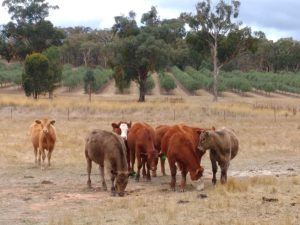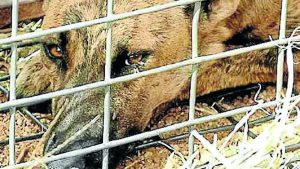Dig deeper into erosion issues
Want to find out more about soil erosion issues, their causes and solutions? Join us on a Field Trip to local properties to look at some common cases in our region.
Watershed Landcare will be hosting two days of soil workshops as part of the ‘Digging Deeper into Watershed Soils’ project, on 11 and 12 May.
The workshops will be held on properties across the region, looking at issues common to the area and exploring how to implement solutions and improve the soil health on your own place.
Due to popular demand, Watershed Landcare has invited Agricultural Ecologist, David Hardwick, back to our region. David has been very well received at previous workshops he has held for Watershed Landcare. An entertaining presenter, he will help land managers dig a little deeper and look below the surface at their soil issues.
Lue Station will host a workshop on Thursday 11 May looking at an incised gully in a 3rd order stream. This poses a landscape scale problem with the surrounding floodplains draining quickly and becoming drier. David will explore solutions to rehydrate the landscape with participants and suggest methods on how to reduce the speed and volume of water runoff.
Participants will also have an opportunity to meet members of Bingman Landcare, find out what they do and how to get involved.
Two differing scenarios will be addressed at the workshop on Friday 12 May.
Our morning session will visit Matt and Emma Kurtz’s property where historical contour banking has been compromised resulting in a concentration of water, with sheet and channel erosion and scalding occurring as the water moves down-slope.
 Then follow us out to the lovely Karrabool Olives on Botobolar Road where David Sargeant and Judy Rogers hope to reduce the runoff which is causing sheet and rill erosion through their olive grove. Here participants can get their hands dirty and learn how to construct small rock structures to slow and spread waterflow.
Then follow us out to the lovely Karrabool Olives on Botobolar Road where David Sargeant and Judy Rogers hope to reduce the runoff which is causing sheet and rill erosion through their olive grove. Here participants can get their hands dirty and learn how to construct small rock structures to slow and spread waterflow.
These are catered events so just bring yourself and some protective clothing (hats, boots, rain jacket) and water.
For more information visit our website: www.watershedlandcare.com.au/events and go to the May events.
The field days are free to attend but places are strictly limited. To register please contact Beth Greenfield, Digging Deeper into Watershed Soils project Coordinator, on 0438 090 525 or by email: info@watershedlandcare.com.au.
These events are supported by Watershed Landcare through funding from the Jaramas Foundation and Landcare Australia and are a part of the NSW Government’s Local Landcare Coordinators Initiative, supported through the partnership of Local Land Services and Landcare NSW.

 When we think of the ecosystem services provided by trees, we often picture large stands of forest. But scattered paddock trees are also an important part of the landscape and deliver multiple benefits on healthy and productive farms.
When we think of the ecosystem services provided by trees, we often picture large stands of forest. But scattered paddock trees are also an important part of the landscape and deliver multiple benefits on healthy and productive farms.